The Hydro Nation Summit 2016, September 26th-27th
Representatives from CREW and the Hydro Nation Scholars Programme will be attending Day two of the Hydro Nations Summit 2016. The Hydro Nations Summit is being organised by Power of Youth in partnership with Scottish Government and Scottish Development International. This event is a two day residential programme being held in Edinburgh to develop a platform to build, collate and scale water and waste water technologies in order to facilitate Scottish companies addressing some the most challenging issues in the water sector globally. There are two elements – a general leadership and entrepreneurial development aspect and a country focus – India. This summit will then be followed up with a second summit being held in India in early 2017.
Launch of the CREW IUCN River Restoration and Biodiversity report, 29th September
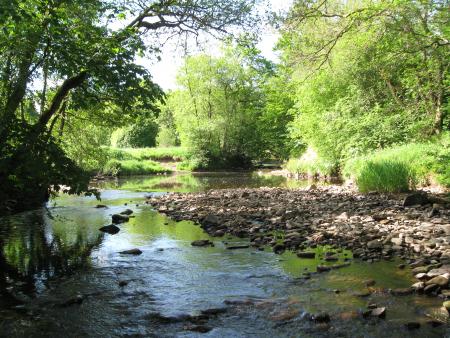
This report has been commissioned through CREW and written by staff from The James Hutton Institute. It represents a collaboration between a range of organisations in the UK and Ireland: Scottish Natural Heritage, Scottish Environment Protection Agency, Environment Agency (England), Northern Ireland Environment Agency, Rivers Agency (Northern Ireland), Natural England, Natural Resources Wales, Loughs Agency (NI), Office of Public Works (Republic of Ireland), Inland Fisheries Ireland, and the River Restoration Centre.
The report describes the importance of rivers in the UK and Ireland for nature conservation, summarises the damage that river habitats have sustained over many decades, and discusses ways in which repairing damage and restoring river habitats can bring benefits both to wildlife and to human society. We hope it will not only raise awareness of the importance of river restoration but also help to obtain funding for practical restoration work around the UK and Ireland.
The report will be launched by Susan Davies, Director of Conservation at the Scottish Wildlife Trust with Stuart Brooks, Chair of the IUCN National Committee UK. It will provide an opportunity for discussion on future priorities for river restoration, how to overcome barriers to restoration work, and opportunities for funding new projects.
CREW training workshop; risks to soil health, structure and drainage, 16-17th June
A soils and water quality focused training workshop was held at Battleby Conference Centre on the 16th and 17th of June. This workshop combined three CREW projects focusing on soil guidance and health. The workshop was aimed at specialists in catchment management, diffuse pollution, natural flood management, field drainage and farm inspections. The event was well attended by SEPA, Scottish Water and a number of other organisations, including SNH and Scottish Government.
Natural Flood Management (NFM) (e.g. restoring watercourses, riparian tree planting, washland and wetland creation) is a core component of flood risk management strategies in Scotland. However little is known of its potential impact on the farming and land management communities, individual farm businesses, or the socioeconomic impacts and perceptions of its potential wide-spread introduction. To support policy implementation, information is required on land managers’ willingness to implement NFM, and to be able to relate willingness to generic farm characteristics (farming systems, land use types, geographical location), different types and locations of NFM measures, and to farm economics.
The main objectives of the project are to undertake:
- A large scale survey of farmers’ attitudes to NFM and to the use of potential policy instruments to promote its uptake and delivery; and
- Farm-scale economic analyses of the impact of NFM measures under different scenarios.
Monitoring guidance to assess the effectiveness of the Rural Diffuse Pollution Plan
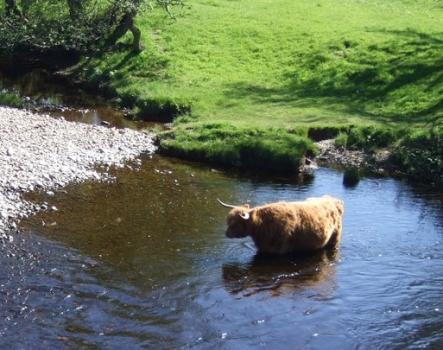
Water quality is generally good across Scotland. Yet, SEPA estimates that around 30% of water bodies are expected to be at less than the good status required by the Water Framework Directive at the end of 2015 due to the adverse effects of rural diffuse pollution. The most widespread diffuse pollution pressures include losses of nutrients, pesticides and faecal indicator organisms in runoff.
The Rural Diffuse Pollution Plan was launched in 2011 with a number of measures to ensure effective reduction of these pressures and delivery of the good status. CREW have been asked to provide expert opinion on the suitability of currently available monitoring data to reliably detect change and identify true response to diffuse pollution control measures. This report provides recommendations on the following issues:
- What statistical analyses are needed to identify change reliably?
- What is more suitable to show change reliably:
- The concentration or load metric?
- The spot or automated composite sampling technique?
- The flow-proportional (i.e. sampling at fixed levels of flow orfor fixed water volume) sample method or time-composite (sampling at fixed time intervals) sample method?
Developing a Method to Monitor the Rural Diffuse Pollution Plan: Providing a Framework for Interpreting Catchment Data
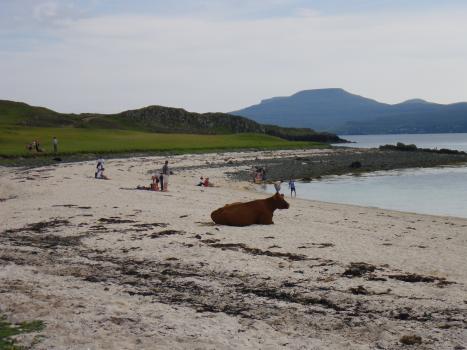
This report is in response to a request to develop a weight-of-evidence method to enable change in priority catchments to be recorded, understood, and interpreted in the context of catchment data. The report outlines the method for collecting and combining data to assess the effectiveness of the Rural Diffuse Pollution Plan that represents Scotland’s strategy to reduce water pollution caused by agricultural land use. The report also evaluates the efficacy of the method to monitor the progress of the strategy using data from selected priority catchments. Recommendations for improving the robustness of the weight of evidence approach are also provided. A parallel report using the same data valuates the suitability of the current water quality and ecological monitoring programme to provide reliable estimates of change.
The North Glasgow Integrated Water Management System: A review
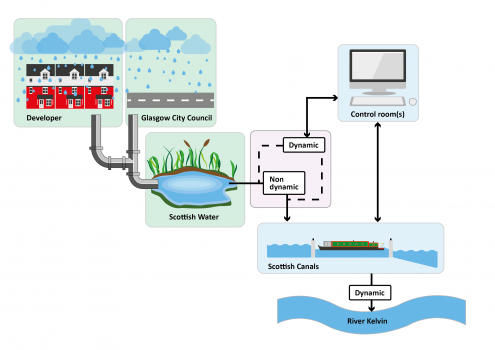
The Metropolitan Glasgow Strategic Drainage Partnership is made up of Scottish Water, Glasgow City Council, Scottish Canals, South Lanarkshire Council, Clyde Gateway, Scottish Enterprise, Renfrewshire Council, East Dunbartonshire Council and the Scottish Environment Protection Agency (SEPA) and represents an innovative approach to water management which meets the objectives of the Hydro Nation Agenda. Since its inception the partnership has sought innovative ways to manage urban water systems that are ultimately sustainable and support the continued growth of Glasgow. The North Glasgow Integrated Water Management System is at the study phase and is part of the regeneration plan for North Glasgow. The integrated approach to water management will provide a range of benefits that include: long-term regional growth; jobs in the local area; ecological recreational spaces; green infrastructure; sustainable urban drainage; internationally recognised case study in best practice water management; and improvements to air quality.
The MGSDP partners, at two workshops, engaged and discussed the operation, charging mechanisms, investment requirements and delivery plan to translate their vision into a sustainable reality for Greater Glasgow as Glasgow City Council embark on delivering their regeneration plan for North Glasgow. The Scottish Centre of Expertise for Waters (CREW) was asked to act as a neutral organisation and validate the plans together with hosting up to two stakeholder workshops to support the implementation of the MGSDP vision for NGIWMS.
Inspiring Aquatic Monitoring - A review of innovative approaches to monitoring the aquatic environment
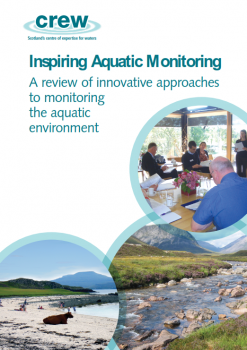
This project carried out an international review of monitoring networks to identify and summarise innovative approaches to inform monitoring under the water Framework Directive. SEPA said "As we review our monitoring networks to support the second cycle of the River Basin Management Plan, it's very important that we learn from approaches and opportunities developed elsewhere. This CREW report, along with the workshop report delivered by the UK Environmental Observation Framework, will help us deliver the tools to improve our understanding of the environment, whilst reducing costs."
Review of existing knowledge – emerging contaminants; Focus on nanomaterials and microplastics in the aquatic environment
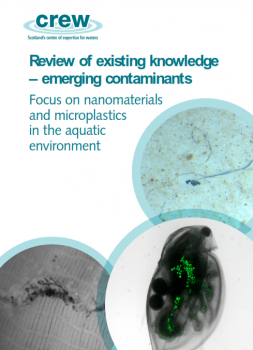
This comprehensive review covers the sources, impacts, risks and monitoring of water related ‘known-unknowns’, including potential emerging contaminants of concern within Scottish watercourses; data availability; impact assessment on ground and surface water including WFD compliance (and coastal environments-Bathing Water Directive); and current and future risks, monitoring and assessment methodologies.
Scotland's Water Sector: An overview
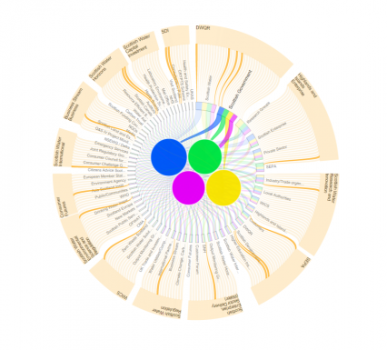
The purpose of this research is to produce a map that demonstrates the scope and scale of Scotland’s water sector and demonstrates how the different parts of the sector link together. It demonstrates how the decision making processes that influence, manage and control Scotland’s water resources are distributed throughout the sector. This research supports the Scottish Government’s Hydro Nation Strategy.




